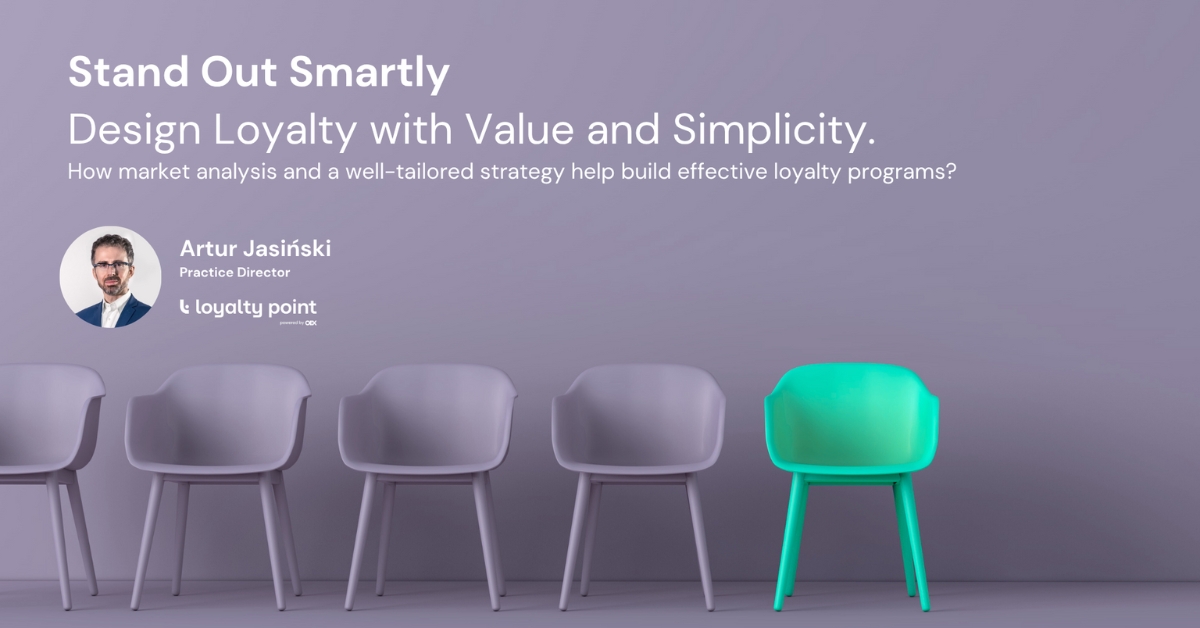In a world where nearly every brand offers a loyalty program, it’s easy to get lost in the crowd. Customers are increasingly fatigued by downloading yet another app, dealing with complex mechanics, meaningless points, unnecessary rewards, and a lack of differentiation between brands.
Is it still possible to stand out? Yes — but not through originality for its own sake. The most effective programs are those rooted in brand values, easy to understand, and offer real value. The essential first step is understanding what others are doing, not to imitate but to create something fresh, aligned with the brand strategy, and ideally more useful and functional for each customer.
Competitive analysis — smart, not mechanical
Analyzing your competitors’ loyalty programs should go beyond comparing discounts or the number of points awarded for purchases. What’s crucial is understanding the entire ecosystem in which a brand operates: from program structure, principles, and mechanics to offered benefits and the participant’s overall experience.
Depending on the program type, examine point conversion ratios or discount thresholds, the interactions rewarded with points, the presence of statuses or subscriptions, offered benefits, and the appearance and functionality of mobile apps. Also look at how brands communicate — language, tone, and chosen channels offer valuable insights. In an omnichannel reality, integration with other tools, such as e-commerce platforms, mobile apps, and social media profiles, becomes increasingly important. Only such a comprehensive approach prevents misjudgments when designing a standout loyalty program.
At the same time, don’t limit your analysis to the biggest players or direct competitors. While it’s essential to evaluate them, smaller companies often provide the most inspiring ideas. The best way to analyze a program is to become a genuine participant — experience the customer journey from learning about the program, signing up, onboarding, to participating in ongoing activities. Also, explore user reviews in the App Store and Google Play, monitor brand communication on social media, and review newsletters, SMS, or push notifications. Industry reports and trend maps, even if some are paid, are valuable sources of insight.
You’ll find more tools and methods for deepening this analysis in our article: How to Craft a Unique Value Proposition for Loyalty Program?
From benchmark to differentiator — organizing market analysis effectively
Benchmarking shouldn’t be about copying ready-made solutions. Its value lies in helping you understand market dynamics and identify untapped opportunities. These gaps are where you can create a unique value proposition.

Every best practice you find should be evaluated in the context of your brand identity and your customers’ needs. Instead of copying a competitor’s successful program, ask: how can I do it differently — better, more authentically, and in a way that sets my brand apart?
One of our clients, polish bank, during the discovery phase of a new loyalty program, conducted research not only diving into local and international banks but also into fintech players like Revolut and Klarna, and brands offering Buy Now Pay Later services. Analysis was conducted well-rated retail, drugstore, and FMCG loyalty programs. By exploring how customers were rewarded for both transactional and non-transactional interactions, the bank identified the ideal mix of touchpoints that would increase customer satisfaction and loyalty.
Such in-depth research doesn’t require external consultants. It can be handled internally — ideally by an interdisciplinary team that includes marketing, sales, and customer service. The most successful brands in loyalty programs are those that put them at the heart of their business. Bringing together diverse perspectives and understanding different departmental needs leads to more effective program design and ensures internal support for implementation or further development.
Start your analysis with a checklist to evaluate various program aspects. Follow up with testing apps and functionalities together as a team, sharing insights during concept sessions. Visual documentation of findings will help create a knowledge base for developing or enhancing your loyalty program.
For instance, a gaming marketplace company conducted a market analysis comparing other niche platforms and global programs such as Xbox Game Pass, PlayStation Plus, and Amazon Prime. We evaluated:
- How the program is communicated to the customer,
- The registration process and its user-friendliness,
- Required registration data,
- Mechanics for earning rewards,
- Benefits of participation and how they are communicated,
- Communication throughout the program lifecycle.
They also assessed each program’s landing page and user dashboard in terms of UX, clarity, and how essential information was conveyed.
Balancing simplicity and value, tailored to customer segments

Many loyalty programs fail not because they’re poorly designed, but because they’re overly complicated. Customers don’t have time to decode complex rules. They need to instantly grasp what they gain and how.
A simple program increases the likelihood of active engagement. That means clear rules, intuitive onboarding, and a user-friendly interface across apps, websites, and physical stores. Soft launches or pilot programs are an excellent way to gather real customer feedback and adjust accordingly.
One of our clients, national supermarket, chain launched its new program internally exclusively for their employees in the first phase. This unusual move provided authentic insights into the value proposition, mechanics, rewards, and communication, while eliminating teething issues before rollout to all customers.
Keep in mind that not all customers seek the same benefits. Newcomers may appreciate welcome discounts or bonus points, while long-term customers will value personalized offers, exclusive events, or premium rewards.
Great loyalty programs don’t just reward past purchases — they encourage new behaviors: more frequent visits, trying new products, providing feedback, sharing photos (social proof), using digital channels, or supporting brand values such as CSR.
How do you build a program that serves different customer segments? Discover more actionable examples of how to craft a unique value proposition for loyalty programs tailored to different customer groups.
Long-term value as a key differentiator
A successful loyalty program should offer not just immediate benefits. A well-designed reward structure, progressive benefits, and the ability to accumulate points over time sustain customer engagement and foster long-term loyalty.
The core of your program should be a unique value proposition — something that differentiates your brand, is easy to remember, and compelling to your audience. A clear UVP is the foundation of an effective loyalty strategy.
Start now. Analyze your competitors’ programs, identify their strengths and weaknesses, and use those insights to build something of your own — smarter, better tailored to your customers’ needs. Then test it on select segments or markets if you operate internationally, and implement the best possible version for your brand and your customers.
But remember: building loyalty is a long-term effort. To offer a standout loyalty program, you must continually analyze it — along with the actions of your current and future competitors. If you’re looking for tailored advice on loyalty program development, feel free to reach out directly via e-mail or connect on LinkedIn. I’d be happy to discuss the opportunities that would work best for your industry.
Author: Artur Jasiński, Practice Director, Loyalty Point

